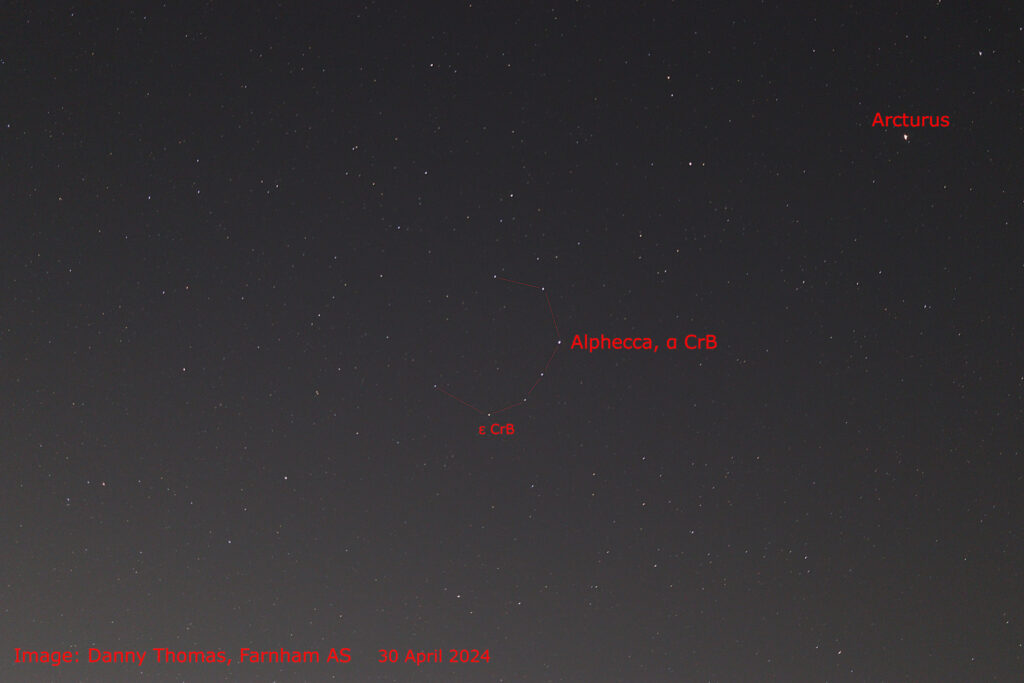The press have recently been reporting that a star, is expected to explode sometime before September 2024 and become visible to the naked eye. The star, called T Crb (not be confused with TauCrB with a “small t” CrB), is located 3000 light years away in the constellation of Corona Borealis and is a white dwarf in a binary system with a red giant.
White dwarfs typically have a similar mass to the Sun, but are the size of the Earth, which means that TCrb has a gravitational field that is strong enough to pull matter ejected from it’s companion. When sufficient mass has been collected on the surface of the white dwarf, the surface temperature triggers a thermonuclear reaction. The white dwarf blows off that material and the process can be repeated. Unlike a supernova when the star is destroyed, the white dwarf survives the experience.
Many similar novae have been discovered but in most cased the a second outburst has not been detected because the process takes thousands of years. However TCrb is one of 10 identified recurrent novae and repeats the process in under 80 years. The last outburst was observed in 1946 and TCrb dimmed in the preceding year, and again in March 2023 which provides some visible evidence for the timing.
The binary pair normally shine with a visible brightness around magnitude +10 well below naked eye range even under dark skies. When the nova outburst starts the visibility will increase dramatically to magnitude +2, which is detectable to the naked eye and a similar brightness to Alphecca (Alpha Crb) or the North Star, Polaris.
Corona Borealis can be found by following the stars of Ursa Major down to Acturus in Bootes as marked in this image……..in other words follow the tail of the bear (or the handle of the Plough or Dipper) towards the tip away from the hindquarters.
This image was taken with a DSLR camera and 24mm lens, on a fixed tripod, using a 10 second exposure at ISO800 under urban skies.
TCrb is expected to appear close to Epsilon Crb, approximately where the marker for ECrb is placed in the image. As well as help find the nova, it will also serve as a comparison to images taken under similar conditions when the nova becomes visible.
Image credit: Danny Thomas, Farnham AS

If predictions are correct, check back here for an update later in the year!
